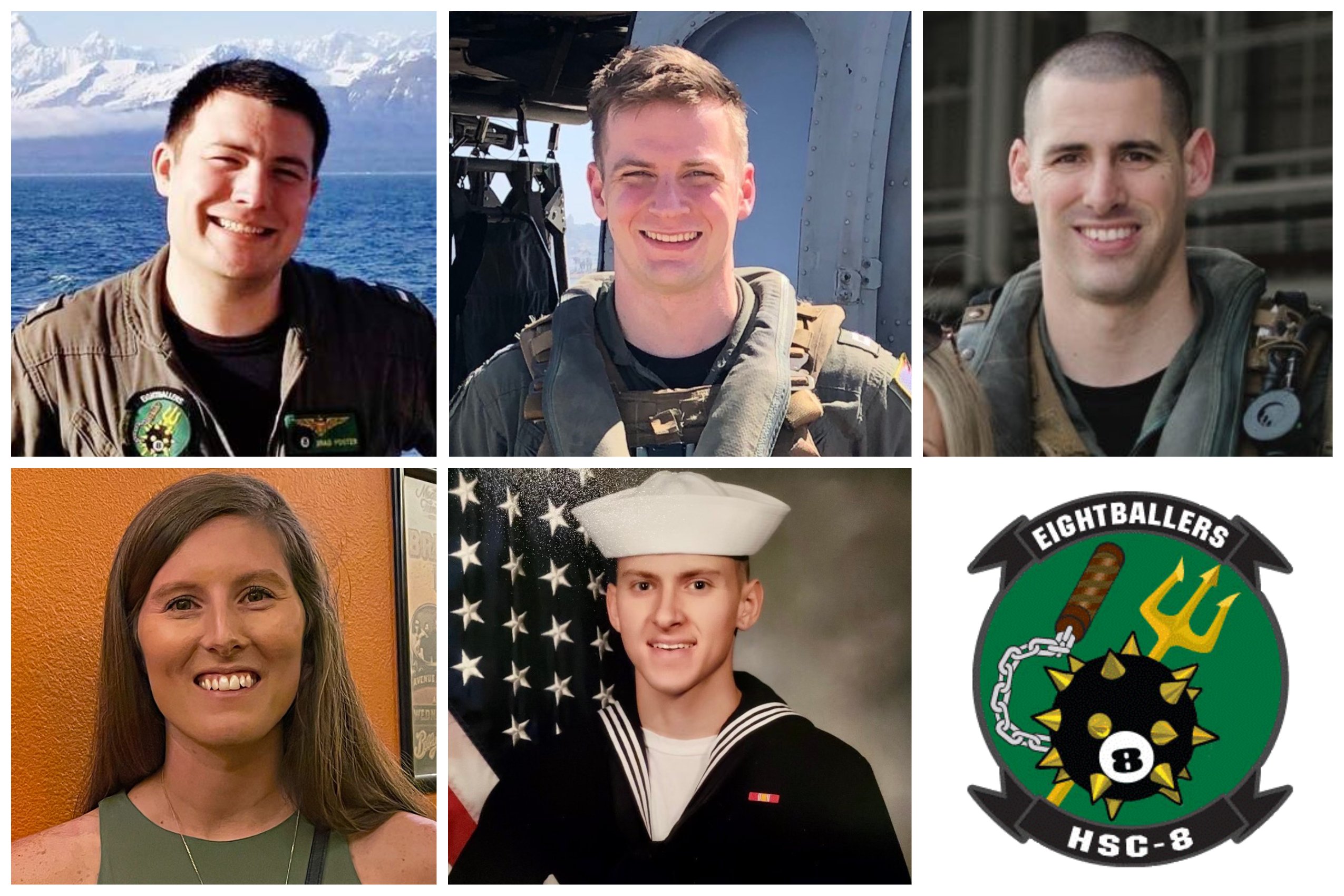
A failure in the system that keeps a helicopter rotor system stable was responsible for a fatal August 2021 fatal helicopter crash in which five sailors were killed, according to the results of an investigation released this week.
The Navy released the command investigation into the Aug. 31, 2021 MH-60S crash that occurred just after the helicopter touched down on the flight deck of USS Abraham Lincoln (CVN-72).
Five crew members of the “Eightballers” of HSC-8 were lost when the helicopter sank before search-and-rescue crews could find them. The Navy later declared them deceased: Pilot Lt. Bradley A. Foster, 29, of Oakhurst, Calif.; pilot Lt. Paul R. Fridley, 28, of Annandale, Va.; Naval Air Crewman (Helicopter) 2nd Class James P. Buriak, 31, of Salem, Va.; HM2 Class Sarah F. Burns, 31, of Severna Park, Md.; and HM3 Bailey J. Tucker, 21, of St. Louis, Mo.
According to the report, the helicopter had touched down on the flight deck when it began to experience “divergent and uncommanded lateral and vertical vibrations,” according to the command investigation.
A vertical vibration, which was visible in the tail wheel, gave the first indication of a potential mishap, according to the report. The vibrations became so violent and loud inside the helicopter that the one sailor who survived told the command investigator that he could not hear any communication and it sounded like “loud knocking,” according to the investigations.
The vibrations caused the helicopter to rotate left, which was likely ground resonance. The tail then hit Abraham Lincoln’s right side gutter, and the nose started to rotate right, which the command investigator noted was likely caused by the pilot hitting the right pedal to stop the helicopter from rotating to the left.
The two pilots – Lt. Bradley Foster and Lt. Paul Fridley – attempted to pull the Power Control Levers, following emergency procedures. They were unsuccessful due the shaking, leading the command investigator to suggest that the level location in the upper center console “is not ideally located for quick securing of the engine in an emergency,” according to the investigation.
The MH-60S rotated left about 50 degrees then right 200 degrees. Its rotor blades then hit the flight deck, causing the blades to detach. One blade flew toward three other aircraft and two others went toward the landing area. It is not clear what happened to the fourth blade.
The helicopter rolled to the left, falling off the starboard side of Lincoln, tail first. The two pilots were restrained in their harnesses, while the other crew members – Buriak, Burns and Tucker – were restrained by gunner’s belts.
The helicopter likely landed in the water so that the left gunner’s window faced toward the surface of the water as it sank. The crew member who survived, on the helicopter as the rescue swimmer, was sitting by the left gunner’s window holding the two gunner’s handles at the time of the crash. This was likely what allowed him to swim out of the helicopter’s left window and survive, although injured, according to the report.
After the helicopter was recovered, the Navy determined that a damper hose – damper hoses are assigned to each blade to provide fluid to the damper system in the rotor – failed causing the crash.
Damper hoses are typically only replaced when they fail or when they show problems upon inspection, according to the report. The helicopter, which had been on two previous flights that day, passed its inspection.
The damper hose likely failed because of a flattening of its braids, which could not be seen during the inspection, according to the report. The investigation concluded that the crash was not the fault of any crew actions.
The crew and the helicopter were recovered in October from a depth of more than 5,000 feet, USNI News reported at the time.





